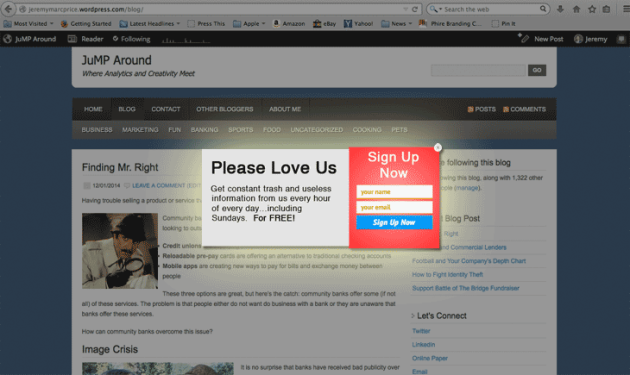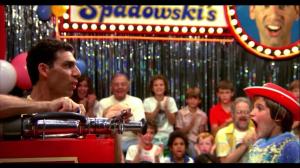Should Community Banks take the Planet Fitness Approach?
03/31/2016 Leave a comment
 Recently, an acquaintance told me that he and his significant other had joined Planet Fitness. There is a Planet Fitness near my home, and I had seen their television commercials, but had never visited their location. Curiously, I asked him questions about it. Here are a few highlights.
Recently, an acquaintance told me that he and his significant other had joined Planet Fitness. There is a Planet Fitness near my home, and I had seen their television commercials, but had never visited their location. Curiously, I asked him questions about it. Here are a few highlights.
Judgement Free Zone ®
Planet Fitness claims it not a “gym” and their Judgement Free Zone ® tagline firmly stands behind it. That means, no outside trainers and heavy lifting (i.e. deadlifts and cleans) is highly fround upon; in fact, “grunting” is prohibited.
The Daily Show had a hilarious report on this very subject a few years ago:
The concept of Planet Fitness it to create a welcoming environment to either:
- People new to working out
- People who just want a causal, laid back gym environment
In other works, gymrats and crossfitters aren’t the target market for Planet Fitness.
Laid Back. With my mind on my money and my money on my mind!
Planet Fitness is using a “laid back” approach that other businesses and non-profits have been applying for years. Take Non-denomiational Christian churches for example; there is one church in my city that separates itself by telling people to “Come as you are.” In fact, they have even hosted nontraditional meetings in a bar and call it “Beer Church.”
How does this apply to banks?
There are two lessons banks can learn from this approach. Intimidation and target marketing.
Intimidation
What’s more intimidating than going to a gym? How about asking a complete stranger for money. Isn’t that essentially what a loan is? A person walks into a “Financial Institution” and literally pleads their case to borrow money.
What if a bank were to make banking, particularly lending, less intimidating? There are several ways of doing this:
- In Branch Financial Literacy Classes
- Participating in Get Smart About Credit
- CRA Initiatives
The list can go on and on; but first, there must be a mentality, a company culture that welcomes these approaches, otherwise it is just blowing smoke.
Target Marketing
A hot, dynamic term in marketing, especially with community banks. But how targeted is the marketing approach? Let’s consider home equity lines of credit (HELOC).
- Do you expect someone with a $150,000 home to be the same type of person who owes a $500,000?
- Do you think a 50 year old married couple with three children in their late teens to mid 20s have the same needs/wants as a married couple in their early 30s?
If not, why do banks consistently market to those customers the same way?
Banks throw a huge advertising net that includes phrases like, “remodeling, vacation, tuition cost” and the list goes on and on. Instead of trying to jam as much information out there, wouldn’t it be better served to create a message directly targeting a specific market?
Start with your current customer base and/or with the communities you serve. Is there a specific demographic you are trying to reach? Once you answer that question, find out what connects each person in that demographic.
Again, go back to HELOCs. If you already have a customer base, then use a prospecting tool to gather information. In this case, let’s say a prospecting tool is used to find out where this customer base lives in your area. From there, use tools to communicate your message to this audience.
- Direct Mail Postcards
- Google Adwords targeted to the Zip Code and street address
- Display Advertising that can be targeted via location AND by common interest
If you are interested in learning more about prospecting tools, then check out CRS Data’s Banker Suite program. The Banker Suite contains a prospecting tool that allows banks to search for certain criteria within different counties.
So, take the Planet Fitness approach and pump up your marketing results and beat the flabby ads approach.


















 Here is an example of how people use LinkedIn in regard to the stage in their
Here is an example of how people use LinkedIn in regard to the stage in their 




